NEEP602 Course Notes (Fall 1996)
Resources from Space
Lecture #24: We "stand on the shoulders of giants!"
Title: Lunar Industrialization and the Saturn VI
Notes:
Assumption: Space resources have a role in the economy of the Earth-Moon-Mars Sector of the Solar System
- Resources for use on Earth
- Resources for use in space transportation
- Resources for use by lunar and Martian settlements
- Resources for protection from asteroidal and cometary collisions
Assumption: Many national and world trends lead to the need for a global alternative to fossil fuels for the production of electrical power.
- local and global environmental prudence
- need for vastly increased standards of living in the third and fourth worlds
- long term value of fossil hydrocarbons as chemical feed stocks rather than fuel
- long term rise in the cost of fossil fuels
- need for vast increases in the availability of electrical power to mitigate the long term effects of cooling or warming of the global climate (the geological rule, not an environmental exception)
Assumptions underlying consideration of lunar industrialization
- Alternative(s) to fossil fuels required for the 21st Century
- Global population will double by 2050
- 15 BOE/capita required to stay even with current power consumption
- 60 BOE/capita required to reach current US consumption and quality of life
- Consequences of meeting most of this demand with fossil fuels and fission power plants are unknown
- Global fossil fuel supply probably would be increasingly subject to cartel or sea power control
- Fossil fuels will become increasingly valuable as chemical feed stock
- Space energy resources, such as 3He for fusion, are such an alternative
- Solar and 3He resources exist in space
- Solar technology well demonstrated
- Physics of 3He fusion advancing steadily
- New technologies promise more rapid progress as well as more commercially interesting products
- 3He fusion systems are commercially feasible provided fuel prices are competitive
(Lecture 42)
- 3He fusion will be politically and environmentally acceptable
- No radioactive fuel
- No nuclear waste
- Reduction of the environmental impact of power generation
- High efficiencies
- No external effluents such as CO2 and SO2
- Potential for a new domestic industrial base
- Potential for less expensive electrical power
- Indirect creation of the capability to benefit from other space resources
- Indirect creation of the capability to deflect Earth crossing asteroids and comets
- Very limited environmental impact on the Moon (see Cameron, et al., 1990)
Lunar industrialization is a logical first step for the private sector to undertake in accessing space resources
- The Moon is nearby and accessible
- The Apollo program and subsequent space activities have provided a base
for planning
- A lunar resource base of potential economic interest has been identified
- The resource base has been partially characterized by the Apollo investigations, the lunar sample analysis program, remote sensing, and subsequent considerations
- Significant quantities and varieties of lunar materials exist for further investigations related to resource and engineering questions
- Technical feasibility of going to and living on the Moon has been demonstrated by Apollo Program
- The necessary technological concepts for transportation to and living on the Moon have been well developed and tested
Assumption: Development of the energy resources in space for use on Earth also provides large resources for use in space
- Lunar 3He
- Lunar materials based solar power (see both Glaser and Criswell, in Kearny, 1989)
Rationale for a private initiative relative to energy resources from space as the foundation for gaining access to resources from space
- No other option from a domestic political viewpoint due to entitlement and other budgetary considerations
- International governmental cooperation next to impossible unless perfectly structured and then it is very difficult
- Need to minimize cost through direct investor pressure to maximize total returns
- taxpayer pressure only indirect and diluted through the broader electoral process
- Need to maximize management efficiency through direct investor pressure
to maximize rate of returns
- taxpayer pressure only indirect and diluted through the broader electoral process
Roles for Governments relative to space resource initiatives
- Maintain a favorable treaty environment
- Law of the Sea Convention vs Intelsat Treaty
- "benefit of all mankind"
- Defense of legal activities in space
- Setting and enforcement of safety and environmental standards through licensing authority
- Customers for science and space resources
- Protect national interests as required
Sub strategies for Lunar Energy Industrialization (Lecture 42)
- Business Plan Development
- Financing
- Planning
- R&D
- Design
- Manufacturing and Construction
- Operations
- Marketing and sales
- Benefit Distribution
Path to Industrialization
- Identification of near term technology spin-offs
- Commitment of significant private resources
- Planning, research, and development
- Attraction of significant investments
- Design, manufacturing, and construction
- Operations
- Lunar 3He can be returned to Earth at commercially viable costs
- At $21/barrel for oil, energy equivalent value is about $3 billion/tonne
- Since the US uses the energy equivalent of 30 tonnes of 3He/year, the no growth market (after about 50 years) is about $90 billion/yr for the US alone.
- For perspective, the Apollo Program cost about $64 billion in today's dollars
- The US growth market in 2050, and after complete power infrastructure replacement, would be on the order of $200 billion
- These economic figures suggest that a lunar mining operation may be commercially viable if the start-up costs can be held to a few billion dollars per year
- Such costs would be comparable to those needed to construct the TransAlaska Pipeline in the 1970s
- Various analyses show that the key cost parameter will be cost per kg launched from Earth to the Moon
The Economics of Earth launch
- Thompson (1989 and 1993) has shown that the major factor in the cost of
large space projects is the cost per kilogram delivered into space (Lectures
35, 36, and 37).
- With respect to lunar 3He, $1000/kg appears to be about the limit and still have an attractive rate of return for investors
- The potential market in space for lunar volatile by products has not yet
been factored into this analysis
- The "capital" or non recurring cost of research, development, test, construction,
and manufacturing of the Apollo Program was about $16 billion or, in current
dollars, about $64 billion (See Schmitt, 1994)
- For this capital cost, the Saturn V could place a maximum payload of about 43,000 kg on a lunar intercept trajectory
- The recurring costs of the last Apollo mission to the Moon was about $3 billion, in current dollars, including about $500 million for the hypothetical cost of the original capital investment
- This works out to a cost per kg of about $70,000.
- The development of a "Saturn VI" to support a commercial 3He initiative with a payload capacity on the order of 100,000 kg would need to lower these recurring costs by about a factor of 70
- Is this reasonable?
- We would know exactly what would be needed.
- Few, if any, parallel design paths would need to be pursued
- Newer, proven hardware technologies could enhance the Apollo capabilities
- Newer, proven computer based technologies would increase performance and lower design, production, and business management costs
- Goals would be extremely focused, as for any good start-up commercial activity
- Business imperatives would be to design to minimum cost as well as to maximum reliability and longevity
- Reusability could be a design goal
- Long term production and operations contracts would reduce cost per launch
- Surplus government space facilities may be available at less than replacement cost
- A market for volatile by products may support a higher launch cost
- A large, talented, highly motivated reservoir of young people would dedicate themselves to this project as their predecessors did to Apollo
- Overall Engineering Approach to a SaturnVI low cost, heavy-lift launch vehicle
- Re-engineer Saturn V with advanced but proven technology
- Design for confidence to proceed in the face of launch problems
- Use strap-on rockets for additional lift capability
- Make most sections recoverable and reusable
- Plan for large volume production with built in quality control
- Alternatives to a Saturn VI approach
- New development
- Re-engineer Energia
Text:
The following references make good text to supplement this lecture. You can see copies by contacting Prof. Schmitt.
Lunar Environmental Impact: Cameron, E.N., et al., 1990, p54-82
"Saturn VI:" Koelle's "Lunar Base Quarterlies"
Lunar Industrialization: Schmitt, 1994, p527-530
Questions:
1. List and discuss at least five national and world trends that
may lead to the need for a global alternative to fossil fuels for the production of
electrical power.
2. Discuss the advantages and disadvantages of organizing the development of
lunar resources under United Nations' management.
3. List and briefly discuss at least eight factors that
suggest that re-engineering the Apollo Saturn V launch vehicle
(rocket) would lead to significantly lower launch costs than for Apollo.
1994, Lunar Industrialization, Journal of the British Interplanetary Society, v47 European Space Agency, 1994, International Lunar Workshop, ESA SP-1170 Cameron, E.N., et al., 1990, Net Environmental Aspects
of Helium-3 Mining, WCSAR-TR-AR3-9012-1, 54-82 Culbertson, E.M., 1975, Apollo Expeditions to the
Moon, NASA SP-350, National Aeronautics and Space Administration, Washington,
313p. Kearney, J.J. Chairman, 1989 Report of NASA Lunar Energy
Enterprise Case Study Task Force, NASA Technical Memorandum 101652. Schmitt, H.H., 1994, Lunar Industrialization: How to
Begin?, Journal of the British Interplanetary Society, v47, p 527-530. Thompson, H.E, 1993, Cost of 3He from the Moon,
Second Wisconsin Symposium on Helium-3 and fusion power, WCSAR-TR-AR3-9307-3.
University of Wisconsin Fusion
Technology Institute ·
439 Engineering Research Building ·
1500 Engineering Drive ·
Madison WI 53706-1609 ·
Telephone: (608) 263-2352 ·
Fax: (608) 263-4499 ·
Email: fti@engr.wisc.edu
Copyright © 2003 The Board of
Regents of the University of Wisconsin System.
For feedback or accessibility issues, contact
web@fti.neep.wisc.edu.
References:

This page last updated August 21, 2003.
 Global Population Growth
Global Population Growth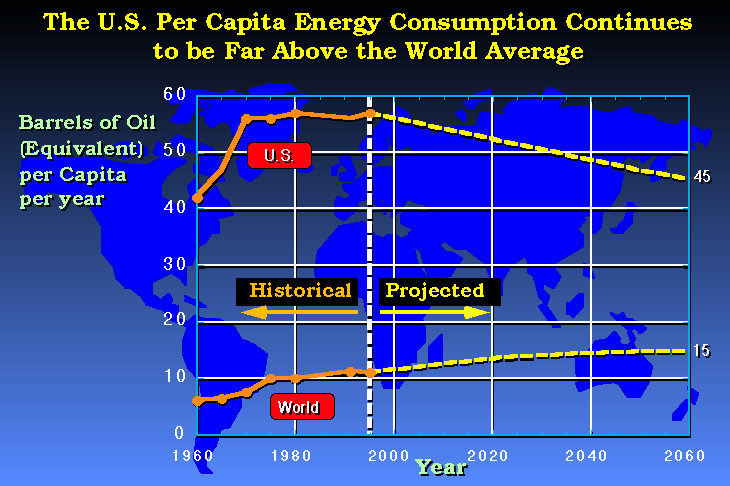 Global Power Consumption
Global Power Consumption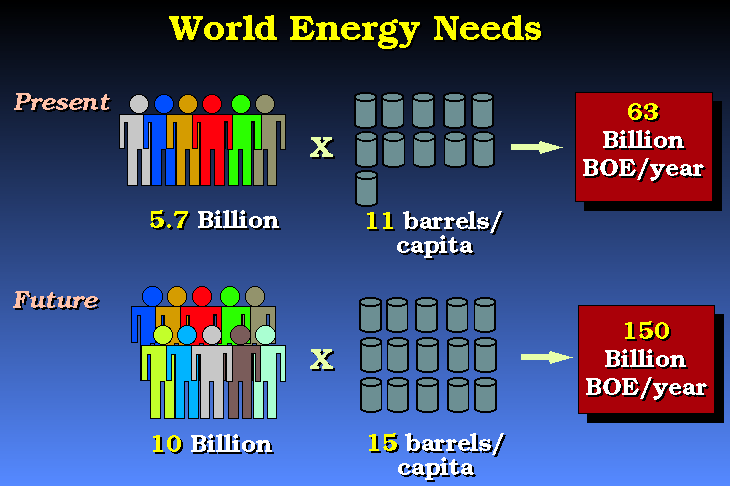 World Energy Needs
World Energy Needs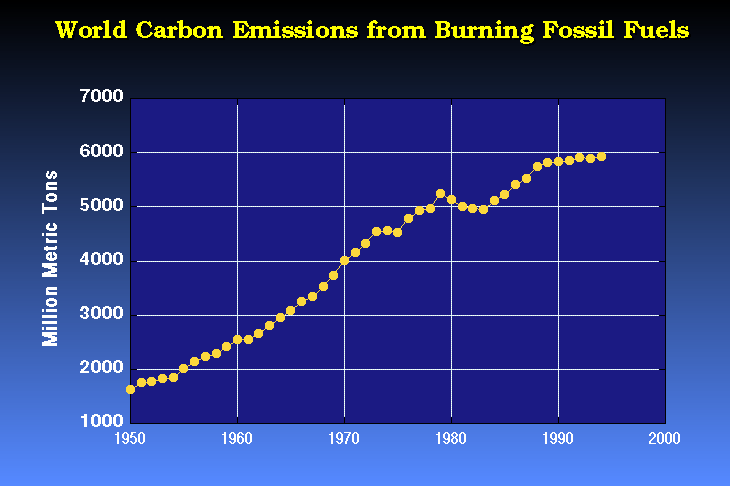 CO2 Buildup
CO2 Buildup War Covers
War Covers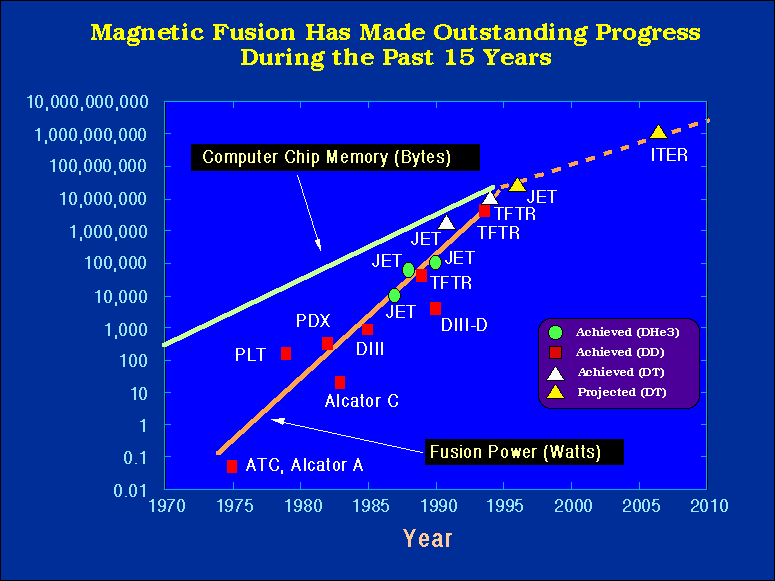 Fusion Progress
Fusion Progress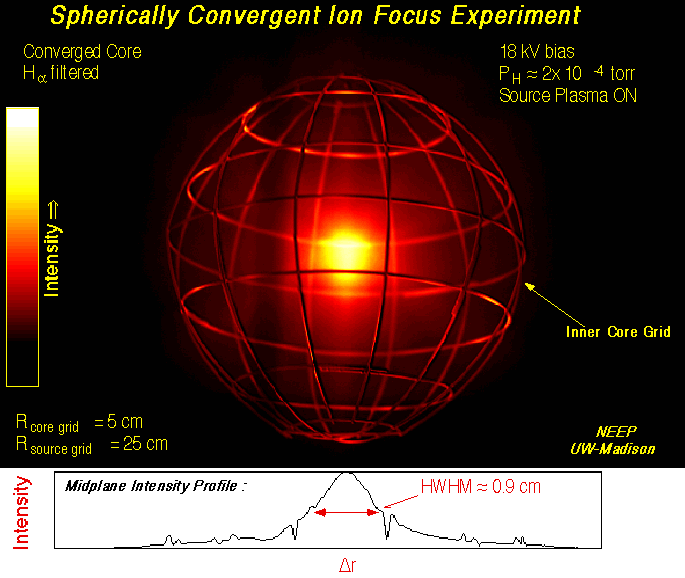 IEC Plasma
IEC Plasma